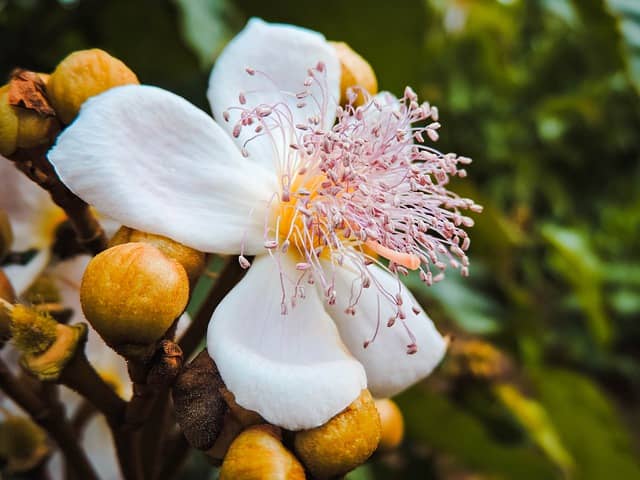Achiote: A Vibrant Spice for Flavor and Color
Discover the versatile and flavorful spice of achiote! Learn about its cultural history, health benefits, culinary uses, and more. Find out why achiote is an essential ingredient in many traditional Mexican dishes and how you can incorporate it into your cooking.

In the vibrant kitchens of southeastern Mexico, there is one ingredient that is always present, achiote. This bright and aromatic spice is known for its ability to provide color, flavor, and fragrance to many different dishes. Achiote, also known as annatto, is a condiment that is made from the seeds of the achiote tree, which grows in the southern part of Mexico, especially in Yucatan and Campeche. Although it is also cultivated in countries such as Brazil, Colombia, Ecuador, and Peru, it is in Mexico where it is most widely used, particularly in the Yucatan Peninsula.
Pre-Hispanic Mexicans considered achiote a sacred plant, using it primarily as a pigment. The powder found in the seeds was decanted and used as a coloring agent for everything from clothing to murals, in addition to being a source of food. The Maya, in particular, developed a technique of great refinement to obtain the achiote paste. After the discovery of America, achiote was introduced to Europe where it was used as a dye for skin, wool, silk, and cotton. It was also used to color cheese, butter, and smoked fish.
In addition to its use as a coloring agent, achiote is a key component in many marinades, rubs, and seasonings used in Mexican cuisine. Achiote paste is made by grinding the achiote seeds with other spices such as cumin, coriander, garlic, and vinegar. The paste is then used to marinate meats, fish, and vegetables, providing a smoky, slightly sweet, and peppery flavor. The combination of spices used in achiote paste can vary from region to region and even from family to family, resulting in different flavor profiles.
One of the most popular dishes made with achiote is cochinita pibil, a slow-roasted pork dish from the Yucatan Peninsula. The pork is marinated in achiote paste, orange juice, and other spices, then wrapped in banana leaves and slow-cooked in an underground pit until tender. The result is a dish with a smoky, slightly sweet, and tangy flavor that is incredibly popular throughout Mexico.
Another dish that features achiote is pollo pibil, a chicken dish that is very similar to cochinita pibil. The chicken is marinated in achiote paste, orange juice, and other spices, then wrapped in banana leaves and slow-cooked until tender. The result is a flavorful and aromatic dish that is perfect for sharing with family and friends.
Achiote is also used in the preparation of many other dishes, such as tamales, empanadas, and fish tacos. It can be used as a rub for grilled meats and fish or added to soups and stews to provide a deeper flavor profile. Its versatility in the kitchen is one of the reasons why achiote is such a beloved ingredient in Mexican cuisine.
Apart from its culinary uses, achiote has also been used for medicinal purposes. In traditional Mexican medicine, achiote is used to treat a variety of ailments, including stomachaches, respiratory problems, and skin irritations. It is believed to have anti-inflammatory properties, and some studies have shown that it may have antioxidant and anticancer effects. However, more research is needed to confirm these potential health benefits.
Achiote is a versatile and flavorful ingredient that has been used in Mexican cuisine for centuries. Its ability to provide both color and flavor to dishes makes it an essential component in many traditional Mexican dishes, such as cochinita pibil and pollo pibil. How the achiote paste is obtained, using a Mayan technique of great refinement, adds to the cultural and historical significance of this spice.

The Versatility and Cultural Significance of Achiote
While achiote is primarily used in Mexican cuisine, it has also gained popularity in other parts of the world, particularly in Caribbean and Latin American dishes. It is now widely available in many grocery stores and can be purchased in both paste and powder form. It is also easy to make achiote paste at home by grinding the seeds with other spices and vinegar.
One thing to keep in mind when using achiote is its vibrant color. It can stain clothing and kitchen surfaces, so care should be taken when handling it. However, this vibrant color is also what makes achiote such a visually appealing ingredient in dishes.
In addition to its culinary uses and potential health benefits, achiote also has a rich cultural history. Its use dates back to pre-Hispanic times in Mexico and has been an important part of the cuisine and culture ever since. It is a reminder of the ingenuity and resourcefulness of ancient civilizations and their ability to utilize the resources available to them.
Achiote is a versatile and flavorful ingredient that adds color and depth of flavor to many different dishes. It has a rich cultural history and is an essential component of many traditional Mexican dishes. Whether used in marinades, rubs, or as a coloring agent, achiote is a spice that should not be overlooked in the kitchen.




